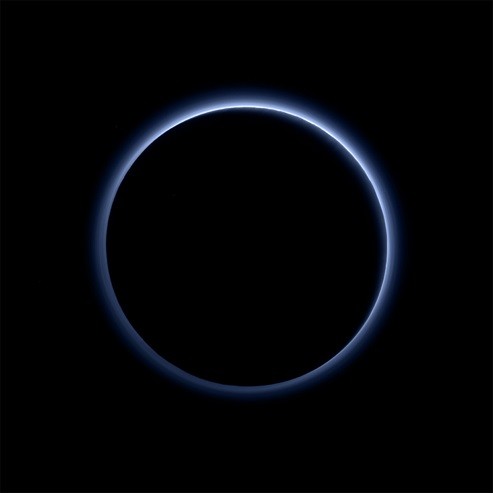NASA just announced that Pluto apparently has blue skies along with vivid red water ice, after receiving additional data transmissions from the New Horizons spacecraft that is also the first spacecraft ever to visit the icy, dwarf planet.
Last week, the probe beamed back the first high resolution color images of Pluto where mission scientists revealed the complex, dynamic surface and terrain of the alien world.
In this new batch of images sent by New Horizons, Pluto's sky shows a striking azure blue tint where this ethereal reflection of light from the horizon is apparently caused by tiny particles bouncing off light, called tholins.
According to New Horizons principal investigator, Alan Stern from the Southwest Research Institute, nobody would have expected a blue sky located in the Kuiper belt and it's truly gorgeous.
According to mission team researcher Carly Howett, from the Southwest Research Institute, that this blue sky is a result from scattering of sunlight by really tiny particles. Those particles are called nitrogen molecules on Earth but on Pluto, these particles seem to appear larger than the ones on Earth, reminiscent of soot, called tholins.
However, the true colors of the particles themselves are most likely grey or red where thy accumulate high up into the atmosphere.
Apart from this blue haze or halo enshrouding the dwarf planet, New Horizons also detected many, smaller regions that possess exposed water ice on the surface.
According to mission team member Jason Cook from the Southwest Research Institute, Pluto generally has large expanses where water ice is hidden by other volatile ices across the planet. Right now, the team is trying to figure out why water appears exactly on those spots and is absent on other regions.
Surprisingly, the water ice on Pluto is bright red in color however, mission scientists are still not sure why. According to mission team researcher Silvia Protopapa of the University of Maryland, the team was truly surprised why the water ice is so red however, we still do not know yet about the relationships of water ice and reddish tholin particles on the surface of Pluto.
The probe was launched in 2006, which finally reached the dwarf plant in July 2015, which makes it the first spacecraft to explore the distant dwarf planet.



























